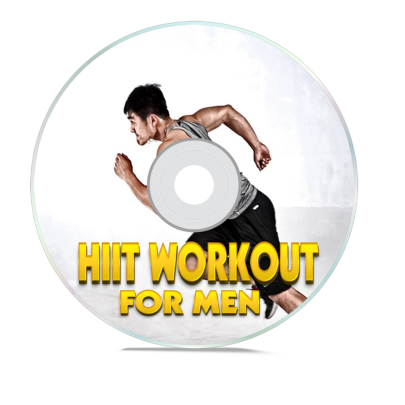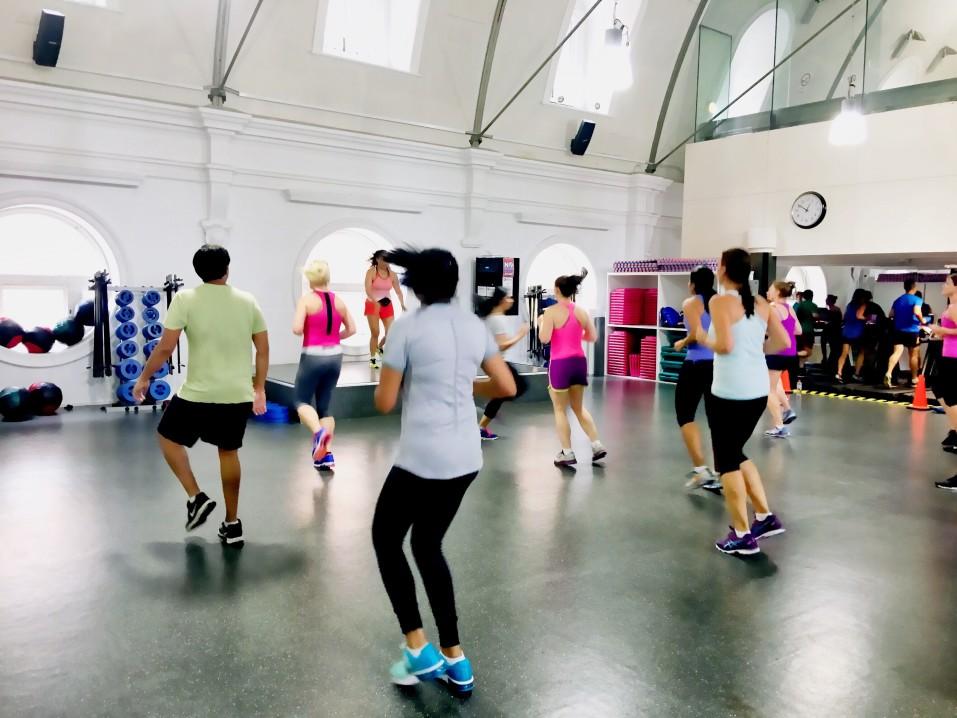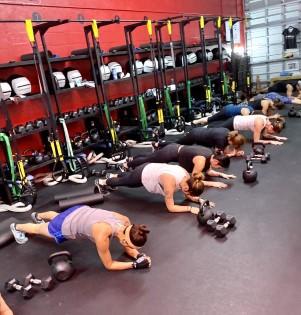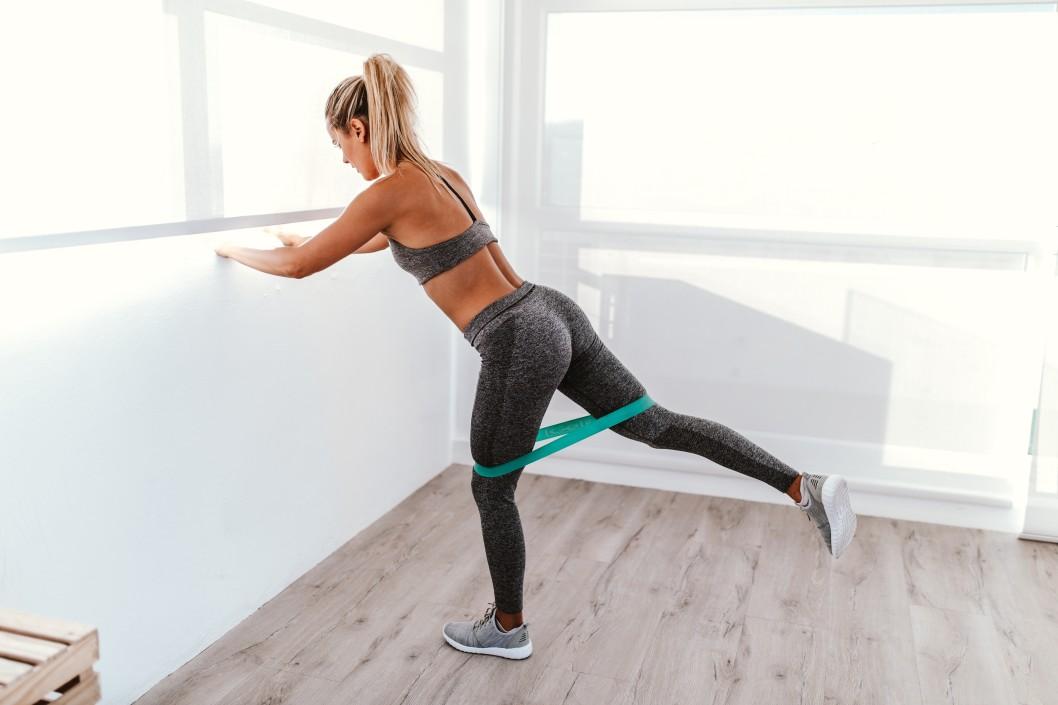HIIT
To benefit from any workout plan to the fullest, it is imperative to have a suitable diet plan, complementing the workout sessions. For HIIT, it is essential to have a diet that is rich in proteins and has sufficient carbs. This ensures that you have enough energy to exercise intermittently without giving in to fatigue. Along with that, an adequate amount of water is also essential for the success of a HIIT workout.
Pre-Workout Nutrition
HIIT workouts involve short yet extensive workout sessions, which is why it is very important for the pre-workout diet to be high in energy. The human body works all day long and is busy in the processes of muscle-building and repair. Pre-workout nutrition refers to the diet that you should take about 4 hours before the workout session. If the pre-workout nutrition is planned strategically, it gives the body ample time and energy to recover and make new muscles.
About 4 hours prior to your workout, it is important to take in sufficient amounts of carbohydrates and proteins. Carbs are the body’s major source of energy and they give the body that ultimate fuel which is needed to drive a workout. Proteins, on the other hand, are coupled with carbs for repair and muscle building.
The carb intake should be moderate enough to not overload the body but energize it enough for the workout. Some good preworkout food options include:
Dried fruit such as almonds or cashew nuts
Plain Yoghurt (Preferably, a blend of yoghurt, fruits and some veggies in form of a smoothie)
Protein powder and Whole wheat toast
A banana and some strawberries or a smoothie
These meals are a great way to energize the body for the workout by giving it the extra energy it requires. Just an hour or so before the actual workout, the body is in need of a ‘boost’ of energy. This comes from carbohydrates so the meal plan immediately before the workout needs to be rich in carbohydrates. Some good pre-workout meal options include:
A bowl of fruit
A nut energy bar
Peanut butter toast
Then, just half an hour before the workout, take in a scoop of whey protein. This is important to reduce the recovery time for the body in case of muscle fatigue or any energy loss. Proteins are the ultimate muscle building sources of the body and when the body needs repair, they are at the front.
Post Workout Nutrition
Likewise, after you are done with such an intense workout, it is important to make up for what the body has lost. Firstly, the body has lost its glycogen reserve, which is the form in which glucose is stored in the body. Secondly, during the workout process, the muscles are also broken down. The main nutrient required for their repair is protein.
As such, the post workout diet plan should have more proteins. Immediately after a HIIT workout session, it is not possible to fix yourself a proper meal so you can go for quick fixes that have high protein content. Some options include:
A Protein shake
A slice of white bread
Soy milk and 2 spoons of jelly
These foods are to be taken in before the actual meal for the day or night. You can take this half an hour after the workout. The proper meal after a HIIT workout should be rich in carbs and proteins both, since both are needed. Carbohydrates are needed for glucose, a part of which will be stored as glycogen in the liver again.
On the other hand, proteins are needed for repair of worn out muscles. It has been seen thorough research that the best combination of proteins and carbs is in a 1:3 ratio. After you have finished you session, make sure that you have a proper meal in the 2 hours following your workout session.
Proteins need to be included since they are involved in building up muscles. The amino acids present in your diet are the building blocks used to repair damaged muscle cells. Different cells in the body are involved in the process of using amino acids to make new muscle fibers or to damage the ones that have been severed during intense workouts.
Proteins present in milk products are quite beneficial for the muscle health so snacks for HIIT diet plan are normally scoops of whey protein or casein protein.
Rice with veggies and chicken
Pasta and salad (add meat sauce for taste)
A cup of mixed green salad and some salmon
A cup of green beans and salmon
It is also important to incorporate some healthy fats into your postworkout meal. This is because fats aid in reducing inflammation that often occurs as a result of high intensity workouts. Inflammation, if it prevails, can hinder the exercising process for subsequent days so it is essential to deal with it from day one.
Along with food, it is important to make up for the water lost during the workout session. Keep drinking water throughout the day, till you go to bed. When you exercise, a lot of water is lost in the form of sweat. This needs to be replaced since a hydrated body sees quicker results in terms of exercise.
3 Day Meal Ideas
As mentioned above, it is absolutely imperative for a good diet plan to complement a workout session for the exercise plan to yield results. A 3 day meal plan with three main courses of the day along with 2 snacks is given below.
Day 1:
Breakfast
2 whole eggs
1 slice low fat cheese
2 slices low fat turkey bacon
2 slices whole wheat bread
Morning Snack A cup of berries or a handful of walnuts
Lunch
Spinach
5 oz. shrimp
Half a cup of dried oatmeal
A table spoon of salad dressing
Mid-day Snack
A table spoon of peanut butter
Half a cup of cottage cheese
Dinner
Barbeque chicken with natural BBQ sauce
Whole wheat break
Cabbage dressing
5 oz. kale
Day 2
Breakfast
An English muffin (whole wheat)
3 slices of turkey bacon
Breakfast sandwich with eggs and a slice of cheese
Morning Snack
A cup of cottage cheese
Half a cup of berries
Lunch
6 oz. chicken breast
A cup of zucchini sliced well
Mid-day snack
A scoop of whey protein
Handful of any dried fruit
Dinner
A large baked potato
Grilled salmon
Half a cup cheese and a table spoon of Greek yoghurt
Salt and hot sauce for taste
Day 3
Breakfast
3 whole eggs
Omelet made with reduced-fat cheese and onions
Morning snack
A cup of spinach
2 spoons of salad dressing with olive oil and vinegar
Lunch
A cup of broccoli chopped well
A table spoon of salad dressing with olive oil and vinegar
8 oz. of chicken breast
Mid-day snack
Peanut butter on a whole-wheat toast
Dinner
Canned tuna sandwich
Half a cup of Green yoghurt
Celery stalk chopped well with chopped onions
It is only by consuming ample amount of required nutrients that you can benefit from your workouts. If the pre-workout meals and the post-workouts meals are not sufficiently loaded with the right nutrients, you will feel fatigued in no time and it will also decrease the stamina of the body.
Coupled with this meal plan, it is important to drink 8 to 10 glasses of water every single day to keep hydrated. More water equals a better working metabolism which is helpful for a successful workout.
HIIT Training can give some amazing results if performed correctly. However, there are a few essentials that you need to consider before starting HIIT. For instance, features like the duration of this routine, the equipment you require and the extent to which you need to go in terms of intensity of the workout are important.
What Equipment To Use In HIIT?
Beginner HIIT training can be fairly effective with just your body weight, but as you move along, you may want to introduce some equipment into your routines.
HIIT training can be done using an assortment of methods. You can work with anything from a Stairmaster to a bike or treadmill and even incorporate sprinting, bicycle sprints or elliptical workouts.
But whichever machine or activity you choose, you need to do it hard, fast and only stop when you feel that you can’t possibly push any further.
A popular choice for HIIT in this regard is a treadmill. It is best to use a curved treadmill since this provides a full body workout. Another common choice for high intensity workouts is the stationary bike to accelerate heart rate and keep it pounding there.
An arm bike is also a good machine to use during high intensity workouts. Working out on this machine requires maximum effort and wrestlers have been using it for building their strength for a long time.
However, if you do not have the budget for all these machines or a gym membership, you can simply get a jump rope. A jump rope will get your heart rate up and keep it there for the duration of the workout.
If you want to follow a somewhat no-equipment HIIT plan, then stick with moves like jumping jacks, sprinting or sprinting in place, and high knees to get your heart going.
How Intense Should The Workouts Be?
High intensity workouts are cardio workouts that are aimed at getting the maximum effort in a short period of time. The key is to keep the intensity levels at the maximum.
But for the workout to be effective, you need to determine your own intensity level. For a beginner, the intensity of a HIIT routine will be different from someone who has been doing it for a while. The sets are short in duration, ranging from 20 to 90 seconds but they require full body force. If you feel that you can continue a routine for more than 30 minutes, then chances are that you are not working at maximum intensity.
HIIT is more popular as compared to other methods because it burns calories more rapidly. It has been seen through research that the more intense a workout is, more fat is burnt. Normally, fitness experts judge the intensity level suitable for a person using the RPE scale or the rate of perceived exertion scale.
This scale basically has a 1-10 spectrum, with 10 being the point where you give the workout everything you have got. Every person needs to determine where they stand on this spectrum and try to move to 10 by gradually upping the intensity of their workouts.
How Restful Should The Rest Periods Be?
While most people do find this strange, rest periods are imperative in a HIIT workout session. Without rest periods, you cannot get the full benefits of the workout. Once you are done with one set of exercise, your body needs to recover before it can perform the next set.
The mechanism for HIIT is that the body first goes into an anaerobic state during the high intensity workout. During the rest phase, the body is forced to recover to aerobic conditions. This shift between the two conditions consumes a lot of energy and results in fat burning.
The HIIT rest period does not have to be full rest. You can also have an active recovery period, such as a plank or walking in place. The ratio that most fitness experts follow is a one to two ratio. For every one minute of high intensity workout, you have to take a recovery period of 2 minutes.
To see if your workout is going well, you need to see if you can talk and exercise at the same time. If you have the energy left to talk while working out, then there is something that you are not doing quite right.
As you progress and your body becomes used to high intensity workouts, you can make some changes in the sets and rounds of sets. You can either add another set to your workout plan or you can decrease the recovery period between the sets.
To get maximum benefits, make the recovery periods active. For example, for the two minutes recovery time that you get, spend one in a plank and the other in full rest state.
How Long Should The Workouts Be?
The duration for a HIIT workout will vary from one person to the next. It also depends on the kind of workout you are doing.
For example, a Tabata session lasts for only 4 minutes. This routine was developed by a Japanese scientist and is very popular among the HIIT group. Normally, a high intensity training session can last for up to 30 minutes.
However, you do not have to work out constantly for 30 minutes. Break up your workout session into working time and recovery time or split the workout into two to three workouts. Make every workout for 6 to 7 minutes and incorporate recovery time in between to make the total duration up to half an hour.
If you do not have recovery time in between, you will most probably get bored of doing the same thing again and again. Plus, overdoing high intensity workouts can be problematic since it may result in injury. As such, you have to plan out your workout properly.
How Frequently Should You Do HIIT Workouts?
Just like training any of your muscles, you don’t want to train chest every single day. So, you should not perform HIIT workouts daily because it is practically impossible to get maximum results by not allowing your body to recover. If you perform high intensity workouts every single day, it can poses the risk of injury.
This can also happen because you are not giving your muscles and the entire body enough time to repair before diving into another wear and tear session. If you are doing too much of it, your mind will also not be on the same track. You are bound to feel fatigue and that will affect the performance in subsequent workout sessions.
It is advisable to perform HIIT two to three times a week. The key is to give your body a one day recovery time between the sessions. For example, if you are doing intense leg workouts, you will not have sufficient energy to work out the very next day. So, keep the next day for rest or do some light yoga instead.
How To Prevent Muscle Burn During HIIT?
The aim of a HIIT session is to burn fat and not muscle. Therefore, to prevent muscle burn, there are a few things that need to be considered. Firstly, it is absolutely essential to take rest days. These days will give your body and your brain to recharge and prepare for the next workout session.
Another important factor to consider is nutrition. To benefit from any workout, it is important that you’re constantly fueled with proper nutrition. You need to take in ample amounts of proteins as they aid in the repair process of the body. Protein supplements are also a great way of preventing muscle burn. They contain amino acids that are then used by the body as building blocks for repairing damaged muscle fibers or to make new ones.
Fitness pros also recommend getting sufficient sleep. Your body heals itself while you sleep. Proper sleep will keep you active for the next workout and it also gives the body some time to repair itself before the next session.
So to reap the maximum benefits of a HIIT workout session, it is imperative to know the basic dynamics of the routine. The duration, intensity and rest periods are all important factors that need to be kept in mind when performing high intensity workouts. Neglecting even one of these factors may pour all your hard work down the drain.
If you’ve read just about any fitness blog, magazine or website in recent years, then you’ll likely have come across HIIT.
HIIT: high intensity interval training. Sprinting at maximum heartrate for a short period of time and then switching to a slower form of exercise for a couple of minutes to recover before starting the whole cycle again.
This type of training is all the rage because it is known to burn more calories in less time when compared with steady state cardio. And it’s great for our VO2 max, mitochondrial function and more.
But why? How does it work? What makes it so special?
What Happens When You Push it Hard
When you engage in HIIT, you start out by pushing hard and going at or near to your maximum heart rate. This is what makes all the difference, as now you are depleting your body of all of its readily available energy in order to drive those fast twitch muscle fibers. This is anaerobic training and it relies on ATP stored in the muscles, as well as glycogen.
After this, you then switch to your regular exercise at around 70% of your maximum heart rate. This is a steady pace that you can maintain, that burns fat using the aerobic system and that allows you to recover and reduce the lactate and other metabolites that build up in your blood during intensive exercise.
Welcome to After Burn
Steady state cardio is normally something you can maintain for a long time before you start to tire out and this is why a lot of people will exercise by running at a steady pace for 40-60 minutes.
If you do this after having done high intensity training however, you will be running at a point when you have very little available energy in your muscles and in your blood. All the glycogen has been used up and thus you have to rely even more on fat in order to keep going. Your body becomes more efficient at burning fat and you see greater benefits from the short amount of training that comes after.
But this isn’t even the best bit. What’s so good about HIIT is that this after burn effect continues for hours after you finish training. You’re now going about your usual activities with less glycogen, which means you’ll burn more fat even to do regular things like picking up a fork, or walking across the room!






